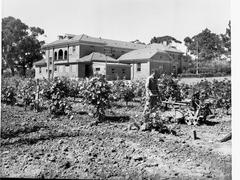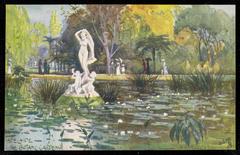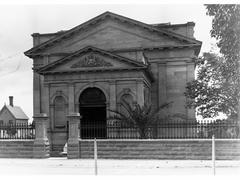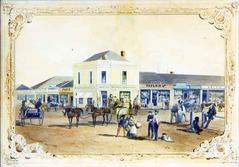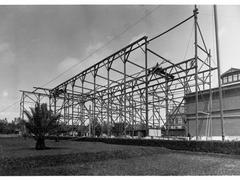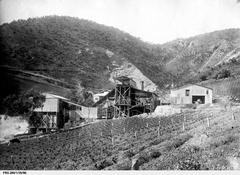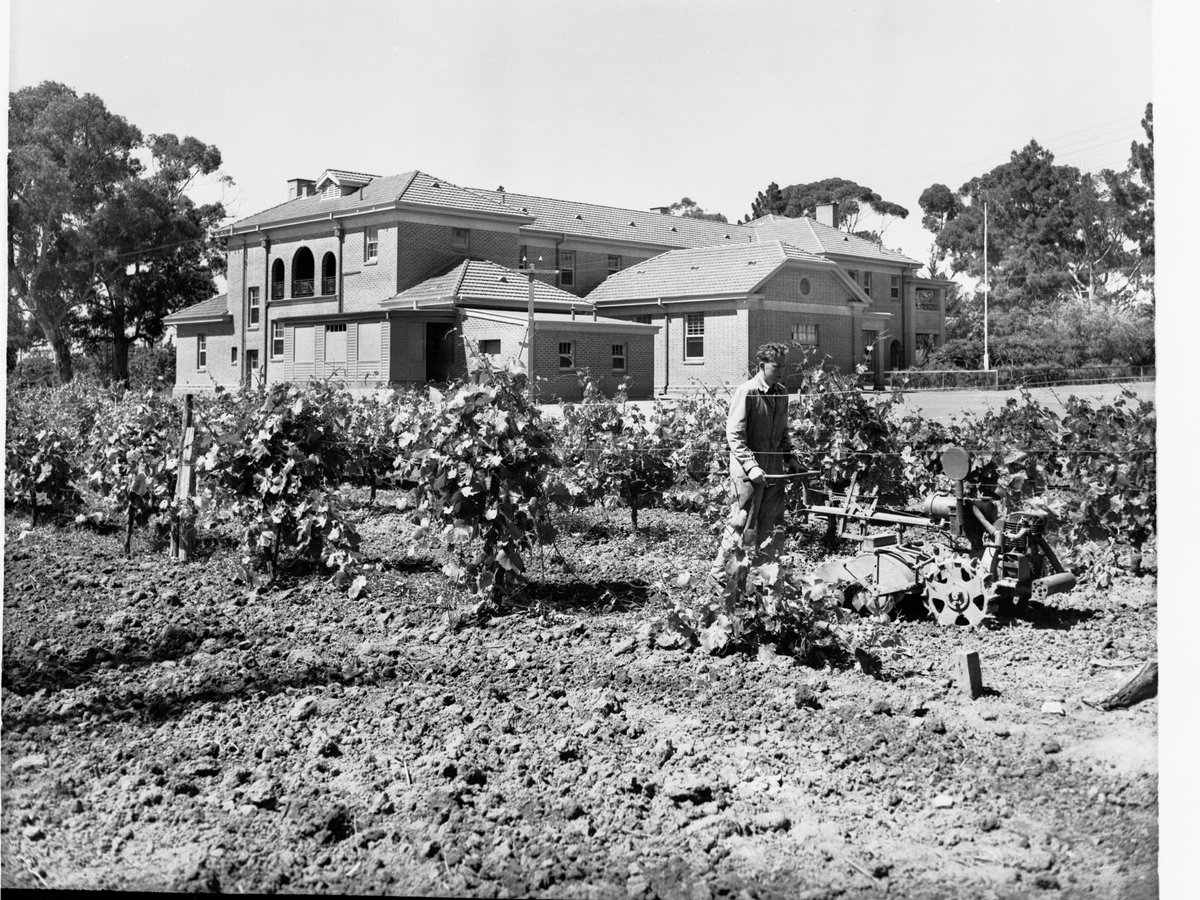
Comprehensive Guide to Visiting Waite Conservation Reserve, Adelaide, Australia
Date: 01/08/2024
Introduction
Welcome to the Waite Conservation Reserve, a hidden gem nestled in the picturesque Adelaide Hills face area. This guide offers a detailed overview of the reserve’s rich history, ecological importance, visitor information, and more. The Waite Conservation Reserve is an essential environmental and educational asset managed by the University of Adelaide, tracing its origins back to 1913 when Peter Waite, a renowned pastoralist and philanthropist, bequeathed the Urrbrae property to the University (University of Adelaide). The reserve is renowned for its dedication to conservation and the advancement of scientific knowledge, making it a significant site for both local communities and researchers alike. Visitors can explore a variety of trails, enjoy the diverse flora and fauna, and participate in numerous activities organized by the Friends of Waite Conservation Reserve (Friends of Waite Conservation Reserve). Whether you’re a nature enthusiast, a history buff, or simply seeking a tranquil escape, the Waite Conservation Reserve promises a fulfilling experience.
Table of Contents
- Introduction
- History and Significance
- Visitor Information and Accessibility
- Special Events and Nearby Attractions
- FAQs
- Conclusion
History and Significance
Establishment and Early History
The Waite Conservation Reserve, located in the Adelaide Hills face area, is a significant environmental and educational asset managed by the University of Adelaide. The reserve’s origins trace back to the early 20th century when Peter Waite, a prominent pastoralist and philanthropist, bequeathed the Urrbrae property to the University of Adelaide in 1913. His vision was to support scientific studies related to agriculture and to create a public park for the community (University of Adelaide).
Following the deaths of Peter and Matilda Waite in 1922, the estate was officially handed over to the University, leading to the establishment of the Waite Agricultural Research Institute (WARI) in 1924. This institute became a hub for agricultural research and education, focusing on plant and soil problems, and providing advisory services to the Department of Agriculture (University of Adelaide).
Dedication to Conservation
In 1992, the Waite Conservation Reserve was formally dedicated to conservation and the advancement of scientific knowledge. This dedication marked a significant shift in the reserve’s purpose, emphasizing the protection and study of its unique natural environment. The reserve is now recognized as one of the largest and best surviving examples of Grey Box Grassy Woodland in South Australia, a nationally threatened plant community (Friends of Waite Conservation Reserve).
Environmental Value
The Waite Conservation Reserve spans 121 hectares, with 110 hectares protected under a Heritage Agreement. This agreement ensures the preservation of native vegetation and wildlife in perpetuity. The reserve is home to over 200 species of native plants and a variety of wildlife, including kangaroos, koalas, and echidnas. Its rich biodiversity and well-preserved ecosystems make it a valuable asset for both the University of Adelaide and the people of South Australia (Friends of Waite Conservation Reserve).
Role of the Friends of Waite Conservation Reserve
The Friends of Waite Conservation Reserve is a volunteer group that collaborates with the University of Adelaide to maintain and enhance the reserve’s natural value and visitor experience. This group organizes various activities, including guided walks, working bees, and educational programs, to engage the community and promote conservation efforts. Their work is crucial in preserving the reserve’s ecological integrity and ensuring its accessibility to the public (Friends of Waite Conservation Reserve).
Urrbrae House and Waite Arboretum
Adjacent to the Waite Conservation Reserve are the Urrbrae House and the Waite Arboretum, both integral parts of the Waite Historic Precinct. Urrbrae House, completed in 1891, was the residence of Peter and Matilda Waite and later served as the home of the Directors of the Waite Agricultural Research Institute. The house underwent significant restoration in the 1990s and is now a historic site open to the public (University of Adelaide).
The Waite Arboretum, established in 1928, is a living tree museum that occupies 28 hectares and contains approximately 2,400 specimens representing over 1,037 taxa. The arboretum is maintained under natural annual rainfall conditions and serves as a valuable resource for research, education, and public enjoyment (University of Adelaide).
Research and Educational Significance
The Waite Conservation Reserve, along with the broader Waite Research Precinct, represents Australia’s leading research, education, and commercialization cluster in plant biotechnology, cereal breeding, sustainable agriculture, wine and horticulture, and land management. The precinct boasts the largest concentration of expertise in the southern hemisphere in these fields, making it a critical center for scientific advancement and innovation (University of Adelaide).
Modern Developments and Community Engagement
In recent years, the Waite Conservation Reserve has continued to evolve, with ongoing efforts to enhance its ecological value and visitor experience. The introduction of the Waite Conservation Reserve App, available on Google Play Store and the Apple Store, provides visitors with navigation aids, high-resolution maps, and interactive features that enhance their exploration of the reserve. The app includes information about flora and fauna, picnic spots, and cultural insights, such as Kaurna language translations for various features (Friends of Waite Conservation Reserve).
Visitor Information and Accessibility
The Waite Conservation Reserve is open to the public from dawn to dusk every day, except on Total Fire Ban Days for the Mt Lofty Ranges fire district. To preserve the natural environment and minimize disturbance to wildlife, dogs are not permitted in the reserve. Visitors are encouraged to explore the reserve’s three marked trails—the Loop Trail, the Sheoak Loop Trail, and the Yurrebilla Trail—each offering unique perspectives of the landscape and its biodiversity (Friends of Waite Conservation Reserve). Visitors can use the Waite Conservation Reserve App for navigation and additional information.
Special Events and Nearby Attractions
Special Events and Guided Tours
The reserve offers special events and guided tours throughout the year. Visitors are encouraged to check the Waite Conservation Reserve App for updates on special events, guided tours, and any seasonal highlights.
Nearby Attractions
Nearby attractions include the Urrbrae House, Waite Arboretum, and other parts of the Waite Historic Precinct, which offer additional educational and recreational opportunities.
FAQs
- What are the visiting hours for the Waite Conservation Reserve? The reserve is open from dawn to dusk every day, except on Total Fire Ban Days for the Mt Lofty Ranges fire district.
- Is there an entrance fee? No, admission is free.
- Are dogs allowed in the reserve? No, dogs are not permitted to protect the wildlife.
- What trails are available for visitors? The reserve features the Loop Trail, Sheoak Loop Trail, and Yurrebilla Trail.
- How can I learn more about the reserve’s flora and fauna? Use the Waite Conservation Reserve App for detailed information and interactive features.
Conclusion
The Waite Conservation Reserve stands as a testament to the vision of Peter Waite and the ongoing commitment of the University of Adelaide and the Friends of Waite Conservation Reserve. Its rich history, ecological significance, and role in research and education make it a vital resource for both the local community and the broader scientific community. Through continued conservation efforts and community engagement, the reserve will remain a cherished natural sanctuary for generations to come.
Visit and Stay Up to Date
Download the Waite Conservation Reserve App for the latest updates and interactive features. Follow the Friends of Waite Conservation Reserve on social media for news and events, and explore other related posts on our website for more information about Adelaide’s historical sites.
References
- Connect Adelaide. University of Adelaide nodes view. Retrieved from https://connect.adelaide.edu.au/nodes/view/7384
- Friends of Waite Conservation Reserve. About the Reserve. Retrieved from https://friendsofwaitereserve.org.au/about-the-reserve/
- Friends of Waite Conservation Reserve. Walks. Retrieved from https://friendsofwaitereserve.org.au/walks/
